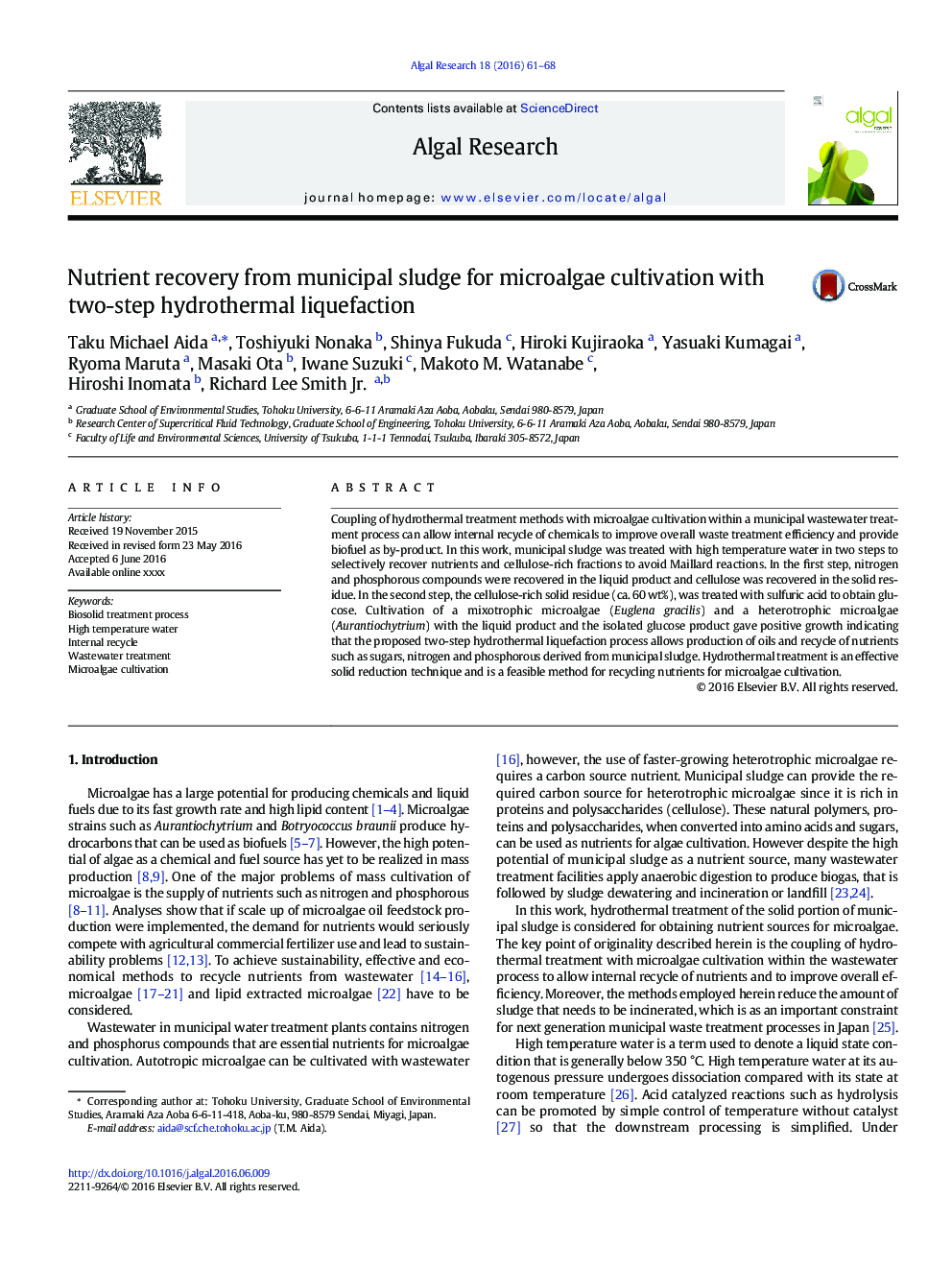| Article ID | Journal | Published Year | Pages | File Type |
|---|---|---|---|---|
| 8086787 | Algal Research | 2016 | 8 Pages |
Abstract
Coupling of hydrothermal treatment methods with microalgae cultivation within a municipal wastewater treatment process can allow internal recycle of chemicals to improve overall waste treatment efficiency and provide biofuel as by-product. In this work, municipal sludge was treated with high temperature water in two steps to selectively recover nutrients and cellulose-rich fractions to avoid Maillard reactions. In the first step, nitrogen and phosphorous compounds were recovered in the liquid product and cellulose was recovered in the solid residue. In the second step, the cellulose-rich solid residue (ca. 60Â wt%), was treated with sulfuric acid to obtain glucose. Cultivation of a mixotrophic microalgae (Euglena gracilis) and a heterotrophic microalgae (Aurantiochytrium) with the liquid product and the isolated glucose product gave positive growth indicating that the proposed two-step hydrothermal liquefaction process allows production of oils and recycle of nutrients such as sugars, nitrogen and phosphorous derived from municipal sludge. Hydrothermal treatment is an effective solid reduction technique and is a feasible method for recycling nutrients for microalgae cultivation.
Related Topics
Physical Sciences and Engineering
Energy
Renewable Energy, Sustainability and the Environment
Authors
Taku Michael Aida, Toshiyuki Nonaka, Shinya Fukuda, Hiroki Kujiraoka, Yasuaki Kumagai, Ryoma Maruta, Masaki Ota, Iwane Suzuki, Makoto M. Watanabe, Hiroshi Inomata, Richard Lee Jr.,
